氟硼酸钾,Potassium fluoroborate,99.0%
产品编号:Bellancom-P88460| CAS NO:14075-53-7| MDL NO:MFCD00011395| 分子式:KBF4| 分子量:125.90
本网站销售的所有产品仅用于工业应用或者科学研究等非医疗目的,不可用于人类或动物的临床诊断或者治疗,非药用,非食用,
| 产品名称 | 氟硼酸钾 |
|---|---|
| 英文名称 | Potassium fluoroborate,99.0% |
| CAS编号 | 14075-53-7 |
| 产品熔点 | 530 °C(lit.) |
| 产品沸点 | 960.85 (310 torr) |
| 产品密度 | 2.505 g/mL at 25 °C(lit.) |
| 精确质量 | 125.966629 |
| LogP | 1.30000 |
| 外观性状 | 淡灰色结晶粉末 |
| 折射率 | 1.3245 |
| 溶解性 | 4.4 g/L (20 ºC) |
| 稳定性 | 1.常温常压下稳定 2.避免的物料:水分/潮湿。微溶于水及热乙醇,不溶于冷乙醇。在熔融时开始分解。能被硫酸等强酸分解生成三氟化硼。与碱金属碳酸盐熔融时生成氟化物和硼酸盐。有毒! 白色粉末状或凝胶状结晶体,无吸湿性,味苦,从水溶液中结晶可得六面棱形晶体。微溶于水及热乙醇中,不溶于冷乙醇中。熔点530℃,在熔融时开始分解。能被硫酸等强酸分解生成三氟化硼。与碱金属碳酸盐熔融时,生成氟化物和硼酸盐。氟硼酸钾密度2.498g/cm3。有毒。大鼠腹腔LD50240mg/kg。 3.能被强酸分解为三氟化硼。与碱金属的碳酸盐共熔生成氟化物和硼酸盐。有毒。 |
| 储存条件 | 1.应贮存在阴凉、干燥的库房中。包装密闭保存,防止包装破损。运输时要防雨淋,防日光曝晒,注意防潮。 |
相关文档
化学品安全说明书(MSDS)
下载MSDS质检证书(COA)
相关产品
| 个人防护装备 | Eyeshields;Gloves;type N95 (US);type P1 (EN143) respirator filter |
|---|---|
| 危害码 (欧洲) | C:Corrosive |
| 风险声明 (欧洲) | R34 |
| 安全声明 (欧洲) | S37/39-S26-S45-S36/37/39 |
| 危险品运输编码 | 3260 |
| WGK德国 | 1 |
| RTECS号 | ED2800000 |
| 包装等级 | I; II; III |
| 海关编码 | 2826909090 |
Synonym:Potassium borofluoride Section 2 - COMPOSITION, INFORMATION ON INGREDIENTS
Risk Phrases: 34 Section 3 - HAZARDS IDENTIFICATION EMERGENCY OVERVIEW
Causes burns.Corrosive.Moisture sensitive. Potential Health Effects Eye: Contact with eyes may cause severe irritation, and possible eye burns. Skin: May cause severe irritation and possible burns. Ingestion: May cause severe and permanent damage to the digestive tract. Causes gastrointestinal tract burns. Inhalation: Irritation may lead to chemical pneumonitis and pulmonary edema. Causes chemical burns to the respiratory tract. May cause abdominal pain, nausea, vomiting, and inflammation of the gums and mouth. Chronic: No information found. Section 4 - FIRST AID MEASURES Eyes: Get medical aid immediately. Do NOT allow victim to rub eyes or keep eyes closed. Extensive irrigation with water is required (at least 30 minutes). Skin: Get medical aid immediately. Immediately flush skin with plenty of water for at least 15 minutes while removing contaminated clothing and shoes. Wash clothing before reuse. Destroy contaminated shoes. Ingestion: Do not induce vomiting. If victim is conscious and alert, give 2-4 cupfuls of milk or water. Never give anything by mouth to an unconscious person. Get medical aid immediately. Inhalation: Get medical aid immediately. Remove from exposure and move to fresh air immediately. If breathing is difficult, give oxygen. Do NOT use mouth-to-mouth resuscitation. If breathing has ceased apply artificial respiration using oxygen and a suitable mechanical device such as a bag and a mask. Notes to Physician: Section 5 - FIRE FIGHTING MEASURES General Information: As in any fire, wear a self-contained breathing apparatus in pressure-demand, MSHA/NIOSH (approved or equivalent), and full protective gear. During a fire, irritating and highly toxic gases may be generated by thermal decomposition or combustion. Extinguishing Media: Use water spray, dry chemical, carbon dioxide, or chemical foam. Use agent most appropriate to extinguish fire. Do NOT get water inside containers. Section 6 - ACCIDENTAL RELEASE MEASURES General Information: Use proper personal protective equipment as indicated in Section 8. Spills/Leaks: Vacuum or sweep up material and place into a suitable disposal container. Clean up spills immediately, observing precautions in the Protective Equipment section. Avoid generating dusty conditions. Provide ventilation. Do not get water inside containers. Section 7 - HANDLING and STORAGE Handling: Minimize dust generation and accumulation. Do not breathe dust, vapor, mist, or gas. Keep container tightly closed. Do not get on skin or in eyes. Do not ingest or inhale. Use with adequate ventilation. Do not allow contact with water. Use only in a chemical fume hood. Discard contaminated shoes. Keep from contact with moist air and steam. Storage: Store in a cool, dry place. Keep container closed when not in use. Keep under a nitrogen blanket. Corrosives area. Store protected from moisture. Section 8 - EXPOSURE CONTROLS, PERSONAL PROTECTION Engineering Controls: Facilities storing or utilizing this material should be equipped with an eyewash facility and a safety shower. Use adequate ventilation to keep airborne concentrations low. Exposure Limits CAS# 14075-53-7: Personal Protective Equipment Eyes: Wear appropriate protective eyeglasses or chemical safety goggles as described by OSHA's eye and face protection regulations in 29 CFR 1910.133 or European Standard EN166. Skin: Wear appropriate protective gloves to prevent skin exposure. Clothing: Wear appropriate protective clothing to minimize contact with skin. Respirators: A respiratory protection program that meets OSHA's 29 CFR 1910.134 and ANSI Z88.2 requirements or European Standard EN 149 must be followed whenever workplace conditions warrant respirator use. Section 9 - PHYSICAL AND CHEMICAL PROPERTIES Physical State: Crystalline powder Color: white Odor: Not available. pH: Not available. Vapor Pressure: Not available. Viscosity: Not available. Boiling Point: Not available. Freezing/Melting Point: 530 deg C Autoignition Temperature: Not applicable. Flash Point: Not applicable. Explosion Limits, lower: Not available. Explosion Limits, upper: Not available. Decomposition Temperature: Solubility in water: slightly soluble in boiling alcohol Specific Gravity/Density: 2.5050g/cm3 Molecular Formula: BF4K Molecular Weight: 125.91 Section 10 - STABILITY AND REACTIVITY Chemical Stability: Stable at room temperature in closed containers under normal storage and handling conditions. Conditions to Avoid: Dust generation, moisture, excess heat, exposure to moist air or water. Incompatibilities with Other Materials: Strong acids, strong bases, strong oxidizing agents, strong reducing agents. Hazardous Decomposition Products: Irritating and toxic fumes and gases, hydrogen fluoride gas. Hazardous Polymerization: Has not been reported. Section 11 - TOXICOLOGICAL INFORMATION RTECS#: CAS# 14075-53-7: ED2800000 LD50/LC50: Not available. Carcinogenicity: Potassium Tetrafluoroborate, C.P. - Not listed by ACGIH, IARC, or NTP. Other: See actual entry in RTECS for complete information. Section 12 - ECOLOGICAL INFORMATION Section 13 - DISPOSAL CONSIDERATIONS Dispose of in a manner consistent with federal, state, and local regulations. Section 14 - TRANSPORT INFORMATION IATA Shipping Name: CORROSIVE SOLID, N.O.S.* Hazard Class: 8 UN Number: 1759 Packing Group: II IMO Shipping Name: CORROSIVE SOLID, N.O.S. Hazard Class: 8 UN Number: 1759 Packing Group: II RID/ADR Shipping Name: CORROSIVE SOLID, N.O.S. Hazard Class: 8 UN Number: 1759 Packing group: II Section 15 - REGULATORY INFORMATION European/International Regulations European Labeling in Accordance with EC Directives Hazard Symbols: C Risk Phrases: R 34 Causes burns. Safety Phrases: S 25 Avoid contact with eyes. S 36/37/39 Wear suitable protective clothing, gloves and eye/face protection. S 45 In case of accident or if you feel unwell, seek medical advice immediately (show the label where possible). WGK (Water Danger/Protection) CAS# 14075-53-7: 1 Canada CAS# 14075-53-7 is listed on Canada's DSL List. CAS# 14075-53-7 is not listed on Canada's Ingredient Disclosure List. US FEDERAL TSCA CAS# 14075-53-7 is listed on the TSCA inventory. SECTION 16 - ADDITIONAL INFORMATION N/A |
| 上游产品 10 | |
|---|---|
| 下游产品 7 | |

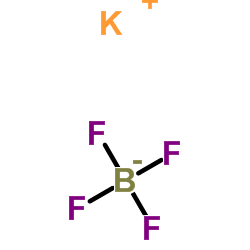




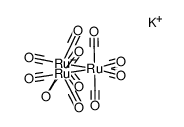
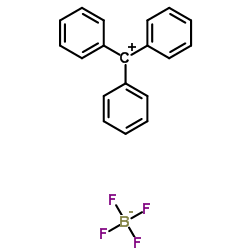
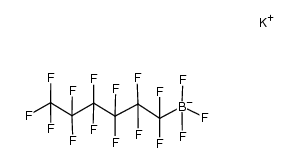
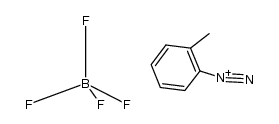
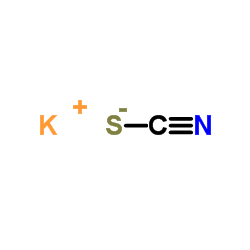
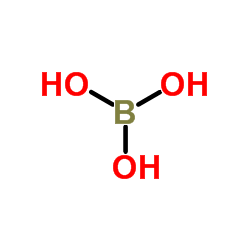
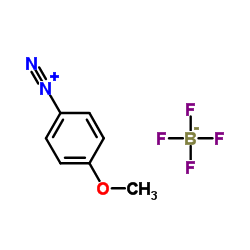
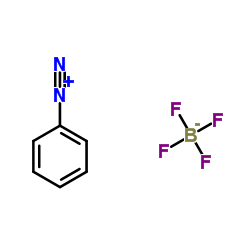
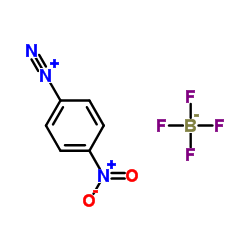
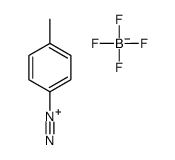
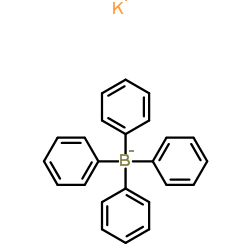
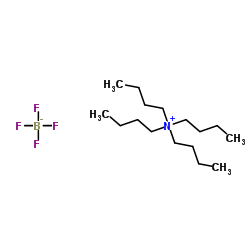

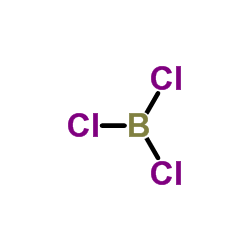
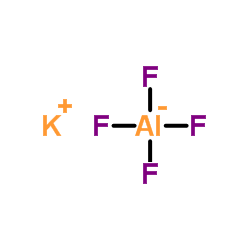

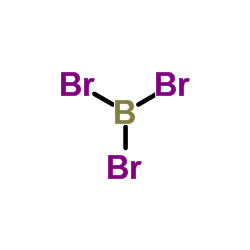





 浙公网安备 33010802013016号
浙公网安备 33010802013016号